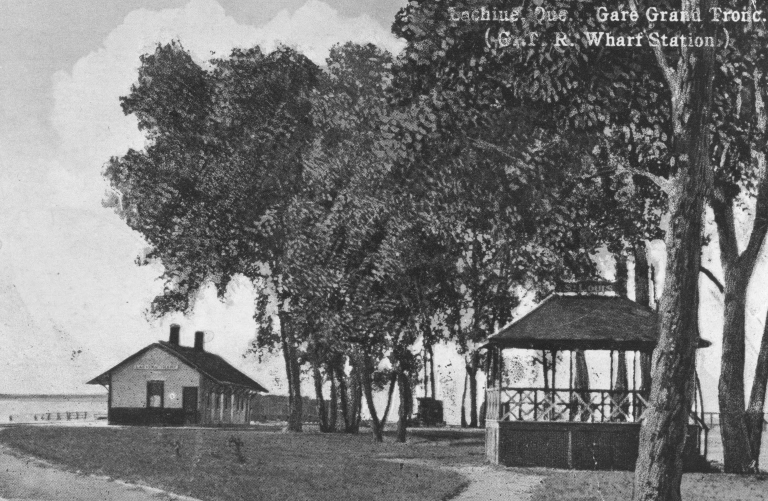In 1889, the Grand Trunk Railway extended its line through western Lachine, adding new stations that encouraged suburban development. This one, located on the pier, was later eliminated.
The train was initially intended to haul freight, but it but quickly became popular with passengers, both for long trips and for simple Sunday afternoon outings.
The Montreal and Lachine Railroad enabled Montréal residents to vacation on the waterfront, enjoying cool breezes at little cost. Hotels and summer homes were built; people swam, and played tennis and golf.
When the ferry terminus was moved from 21st Avenue to the pier at 32nd Avenue, new hotels appeared. The neighbourhoods along the Old Canal were gradually urbanized, but Upper Lachine maintained its agricultural vocation until the late 1800s while, at the same time, developing as a holiday spot.
Families spent the summer there. The relatively short (30 minutes) train ride allowed fathers to join their families if not every day at least for the weekend. From 1895 to 1912, the Stoney Point area at 56th Avenue even had status as a small, self-governing municipality called Summerlea.

